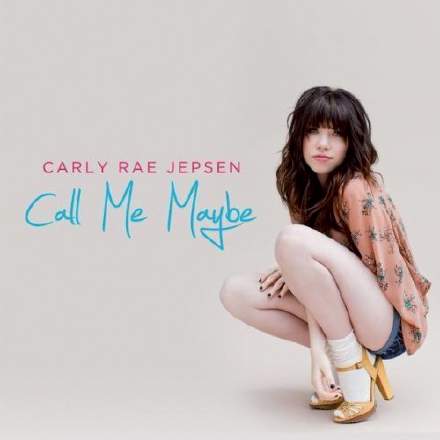
One of my longest-suffering friends is an exceptional art historian who has generously tolerated my inability to distinguish Rothko from Rococo for nigh on 20 years. Such are his didactic powers that, despite my natural lack of artistic sensibility, he does occasionally succeed in sowing a small seed of art-related wisdom in my consciousness. And so it was that, while poking fun at some superfluous decorative stonework in Heidelberg Castle, he recently introduced me to the idea of horror vacui: the artist’s fear of leaving empty space.
Being the audio nerd that I am, though, this immediately brought Carly Rae Jepsen’s debut smash ‘Call Me Maybe’ to mind. Why? Because it’s this song’s textural gaps that completely knock my socks off, providing a welcome antidote to the horror vacui that pervades so many chart arrangements. Look no further than most X-Factor cover versions for repeat offending in this respect, while Dappy’s recent ‘No Regrets’ also sticks in my mind for its heinous ‘Hey, let’s add gospel choir!’ bland-out.
The chorus of ‘Call Me Maybe’ provides an immediate example of what I mean, leaving such a long gap between the first and second string-riff notes that it continues to carry a pleasant whiff of surprise even after repeated plays. But it’s not just that first gap that matters, because the way the perforations in the string riff and vocal line so neatly zip together means that neither takes significant attention from the other. As such, the listener only really needs to attend to two things at any one time: (1) the vocal/riff interplay and (2) the drums. In commercial pop arrangement, that’s pretty much the Holy Grail.
And that’s by no means the end of the holiness. There’s the solo sampled pizzicato opening, for a start, and scarcely-less-stark arrangement drops after both the first and second chorus sections. There are some skilfully formed air-pockets on a smaller scale too, such as the isolated vocal “baby” at 0:27 (beautifully set up by the reverse-envelope transition effect) and the more extended “call me maybe” leading into the final choruses at 2:31. All in all, I hope that the swathe this production has cut through the charts might persuade more artists and producers to reclaim the word ‘vacuous’ as a badge of honour.
There’s lots more to hear in this production besides. The added guitar in the second half of the first chorus is worth listening out for, for instance. I love the way it lifts the arrangement another subtle notch at that point, but without taking up too much space in the mix (partly by virtue of the contrast of its sustained rhythmic ostinato against the vocals/strings tennis match, I think), such that there’s still plenty of room to add the higher guitar line later at 2:00 and 2:48 without stodging up the whole texture.
The only place where it seems to me they’ve missed a trick is in the second pre-chorus, which suffers from one of the classic arrangement pitfalls: starting the second verse at the same ’energy level’ as the first pre-chorus. This means that the second prechorus can’t give an emotional lift in the way the first did (ie. by bringing in a backbeat and high percussion), and yet if anything much else had been added then the following chorus would have sounded less impressive by comparison. (The track I always think about in relation to this is Dido’s hit ‘Hunter’, which comes up against exactly the same problem, but works around it much better, to my mind, by adding a fantastic little dusting of modulated guitar which makes all the difference.)
Another thing to listen to is the string sound, which sounds to me like it’s concealing a lot more than just strings – I’m sure there’s some kind of distorted synth/gtr line scrunched in there too, for instance, and some kind of synth bass underpinning too. Notice also the heavy envelope modification of the sustain portion of the chords, not only ensuring that the chords themselves are thick and powerful, but also that they stop hard on the beat to really emphasise the rhythm and the gaps between the phrases.










